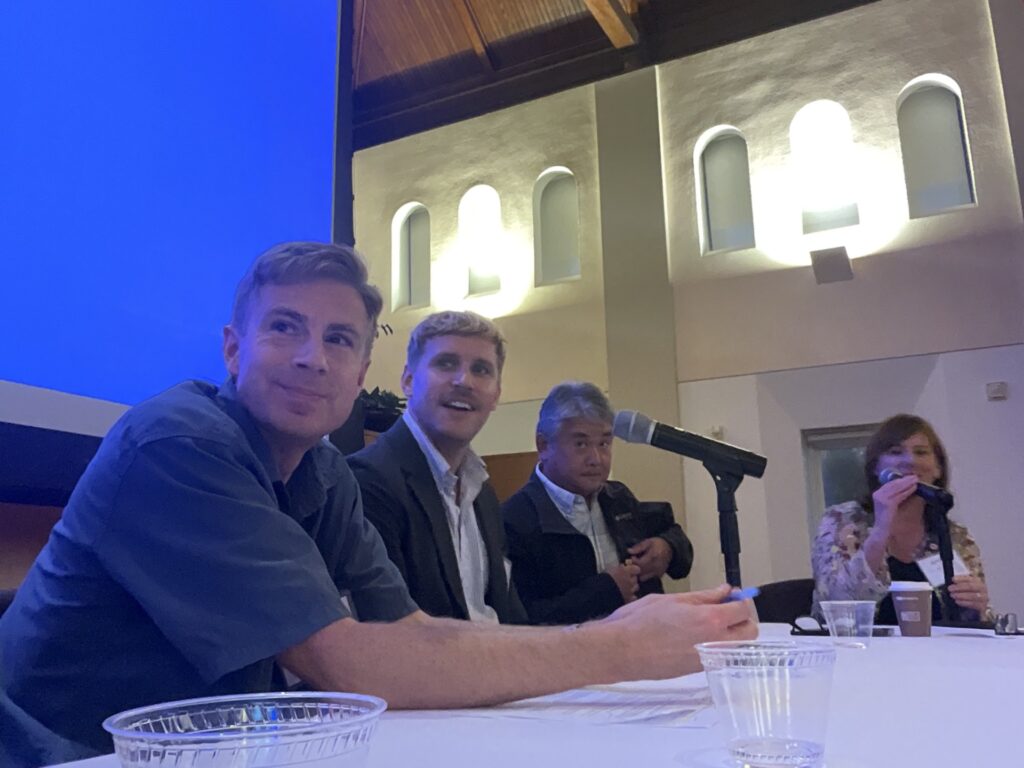
An opening panel on current legal cases, Alinor Sterling (Koskoff Koskoff and Bieder), Kelly Sampson (Brady), and Leigh Rome (Giffords) discussed how recent legal protections of the arms industry make it difficult to seek damages against manufacturers, dealers, or importers of firearms or ammunition in mass shootings. The panel also addressed issues such as the tension between the First and Second amendments when it comes to regulating violence in movies and video games. Recent cases have seen parents held responsible for gun violence by their children, and some participants were concerned that scapegoats can be an excuse for avoiding more impactful legal reforms to regulate firearms.
A panel featuring Alex MacKenzie and Kelly Fellner (Springfield Armory National Historic Site/Coltsville), Ryan Linkof (Lucas Museum of Narrative Art), and Ken Cohen (Smithsonian National Museum of American History) discussed the challenges of displaying firearms in museums, including how to transcend their nature as inert objects, provide the context in which these items were acquired and used, and address their impact on victims.
Rebecca Johnson (Milliman) reported on the healthcare cost journey of nonfatal firearm injuries using data for 50 million commercially insured people and a study sample of about 2,600 people. They found the average cost of care for those admitted to a hospital for a nonfatal firearm injury was more than $65,000. Including individuals who had an initial emergency department visit/observation care, the overall average cost for initial treatment was $30,000.
In a panel discussing the Supreme Court’s embrace of originalism, Pulitzer Prize- winning historian Jack Rakove (Stanford) argued that the Court’s Heller (2008) decision, which unleashed a wave of challenges to gun regulations at state and local level, was clearly wrong because the original debate about the Second Amendment was only about Congress’s right to regulate state militias. Mark Frassetto (Everytown), Ian Ayres (Yale) and Kelly Roskam (Johns Hopkins) concurred, noting many analogous laws and customary practices under common law at the time of the United States’ founding intended to limit dangerous behavior by citizens.
Kevin Sweeney (Amherst) reported that, contrary to mythical invocations of Yankee ingenuity, all guns in the United States at the time of its founding were being manufactured in Europe. At best, some firearms were assembled here. Randy Roth (Ohio State) discussed the cycles of violence that have periodically erupted in American history. LK Bertram (University of Toronto) presented her research about the entanglement of gender, sex work, and armament in the American West from 1880 to 1920. She identified 50 cases in which brothel madams were involved in fatal shootings and discussed how these figures were popularized in historical imagination, Old West shows, and early 20th-century movies.
A panel featuring Joseph Moore (Kennesaw State), Gregory Mixon (University of North Carolina–Charlotte), and Joseph Slaughter (Wesleyan) discussed the way certain religious movements, such as radical evangelists, have embraced the use of firearms.
In a concluding session on the contemporary era, Terrence Witkowski (California State University, Long Beach) discussed toy guns, Andrew McKevitt (Louisiana Tech) analyzed the Cold War origins of gun rights, and Justin A. Joyce (Washington University in St. Louis) analyzed the portrayal of guns in video games.
Click here to see conference photos.